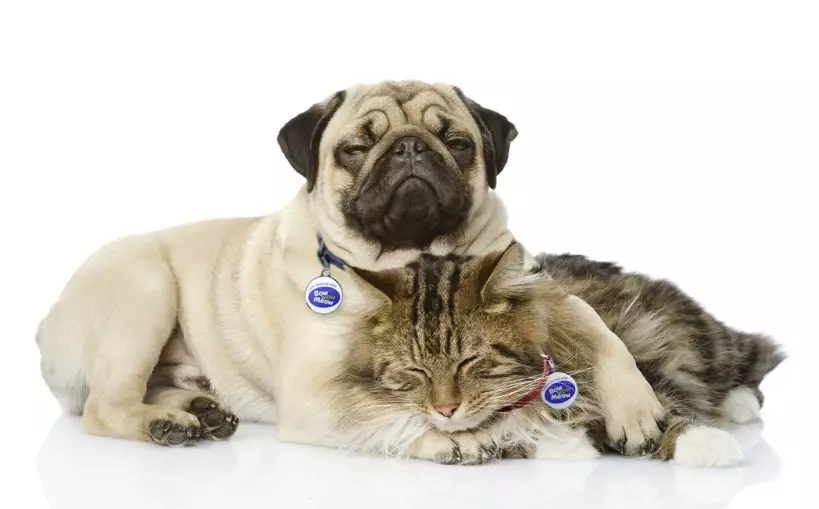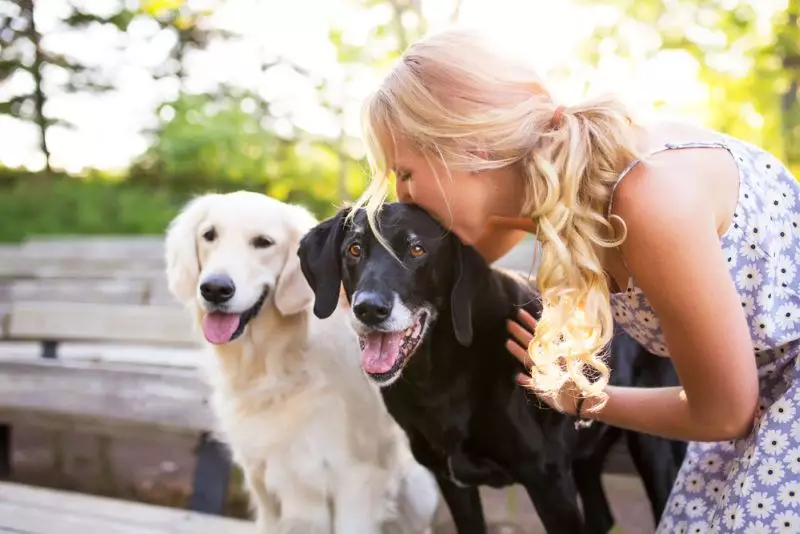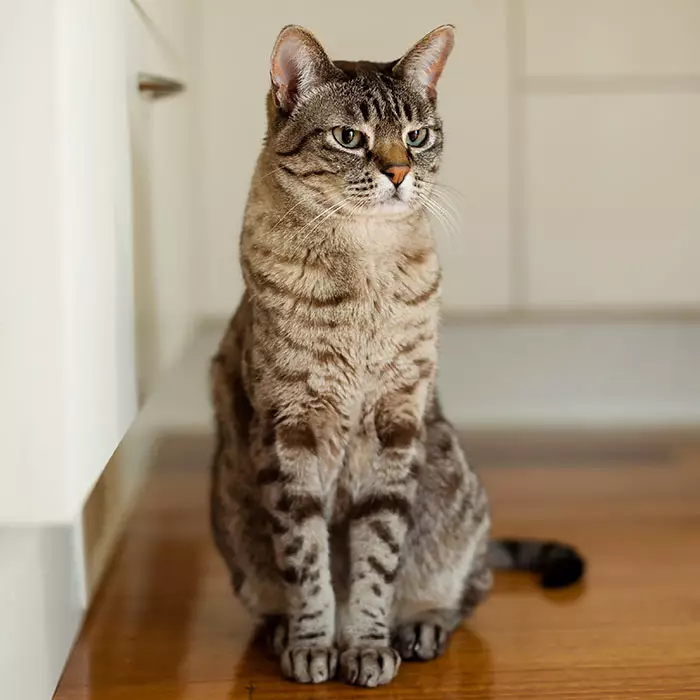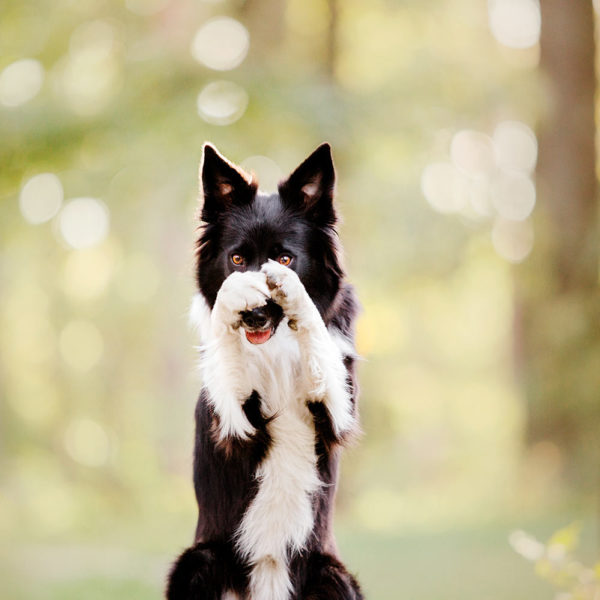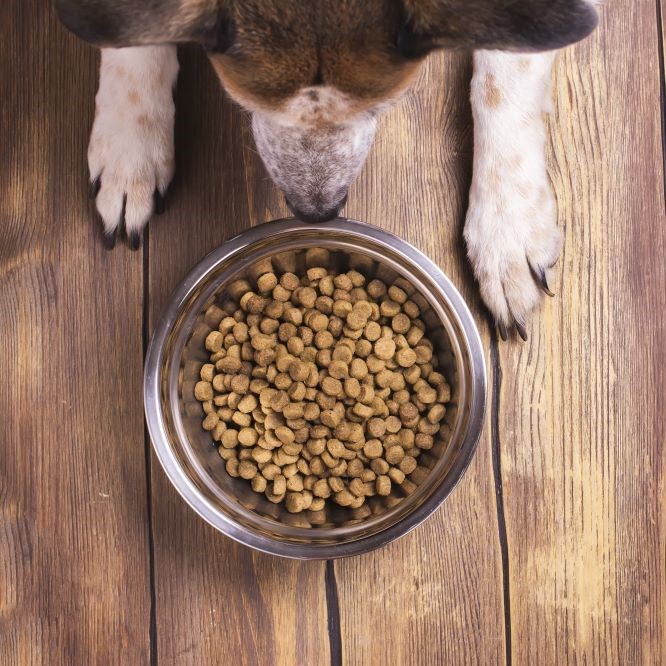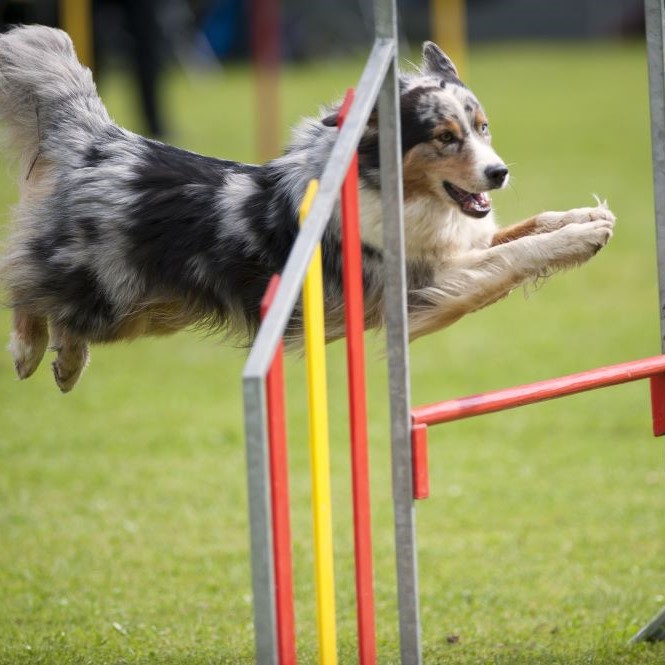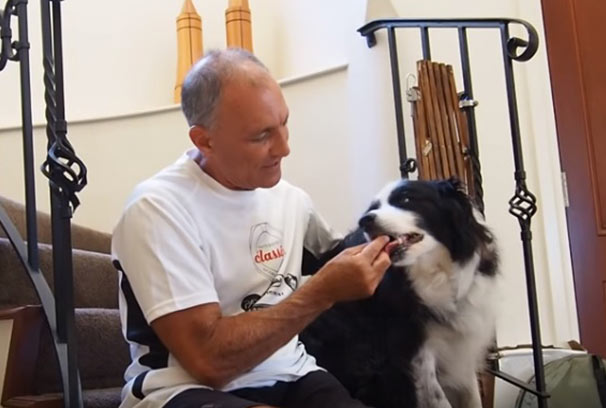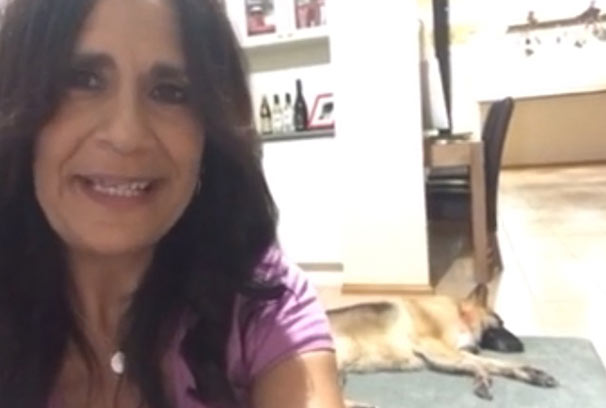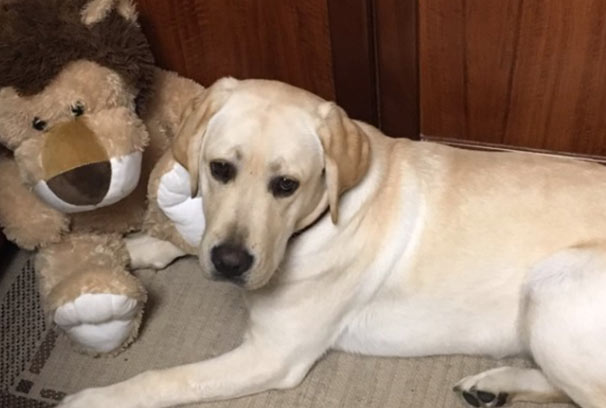Keeping our pets warm, dry and safe through winter

Hot dogs and cold dogs
Did you know that some dogs cope well in the colder weather, while others may find winter’s chilly temperatures a real struggle?
Some breeds are more suited to cool temperatures than others, largely because they originated in colder climates and adapted to suit the conditions. Naturally, Arctic breeds and those with thick, double coats find our comparatively mild winter conditions a breeze.
Breeds that were bred for the cold include the Alaskan Husky, Alaskan Malamute, German Shepherd, Keeshond, Newfoundland, Norwegian Elkhound, Tibetan Mastiff, Siberian Husky, and St Bernard.
On the other hand, there are many breeds with short, single coats, sparse coats and even hairless breeds who really feel the winter chill.
These dogs tend to really struggle in the winter cold:
- Small, shorthaired breeds, such as Chihuahuas and French Bulldogs
- Medium and large sized lean bodied and short haired breeds, such as Dalmatians, Greyhounds and Whippets
- Short legged dogs whose bellies may brush the cold ground, such as Pembroke Welsh Corgis
- Breeds that are clipped short or shorn, such as Poodles
Additionally, very young and very old dogs have a hard time regulating body temperature, so they have more extreme reactions to changes in weather. Therefore, it’s generally advisable to keep older dogs and puppies indoors as much as possible during winter, as well as those suffering from chronic conditions like arthritis.
The biggest challenge for many owners this time of year is keeping their dogs active and sufficiently exercised in the cold and rainy weather. If your otherwise-healthy dog prefers to hibernate indoors than to venture out for some much-needed exercise and fresh air, you may need to take some steps to encourage them, such as investing in some warm and waterproof winter clothing and/or modifying their exercise routine.
Be sure to read on for some great advice, tips and tricks to get your dog out the door when the temperature plummets or the rain sets in.
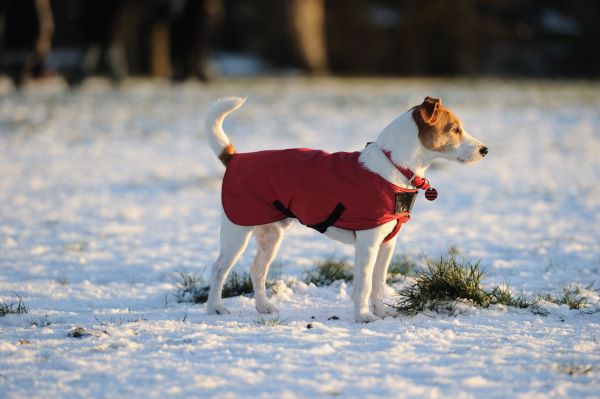
Cool cats
There are many reasons why cats should remain exclusively indoors, and it’s not necessarily to do with the temperature outside. Most cats handle cold temperatures very well, thanks to their warm coats and thick undercoats.
However, that doesn’t mean cats won’t come to harm being outdoors in the cold. Apart from all of the other risks, such as getting lost, being injured in a traffic accident or in a fight with another animal, allowing our cats to spend time outdoors in temperatures below 7ºC puts them at risk of developing hypothermia and frostbite. Note that during July, our coldest winter month, the average minimum temperature is 7ºC in Sydney and 6ºC in Melbourne, while in Hobart it’s 4.6ºC and in Canberra it’s a mere 0.1ºC. And the risk is far greater for older, thinner or hairless cats like the Sphynx .
Keeping pets cosy and comfy indoors
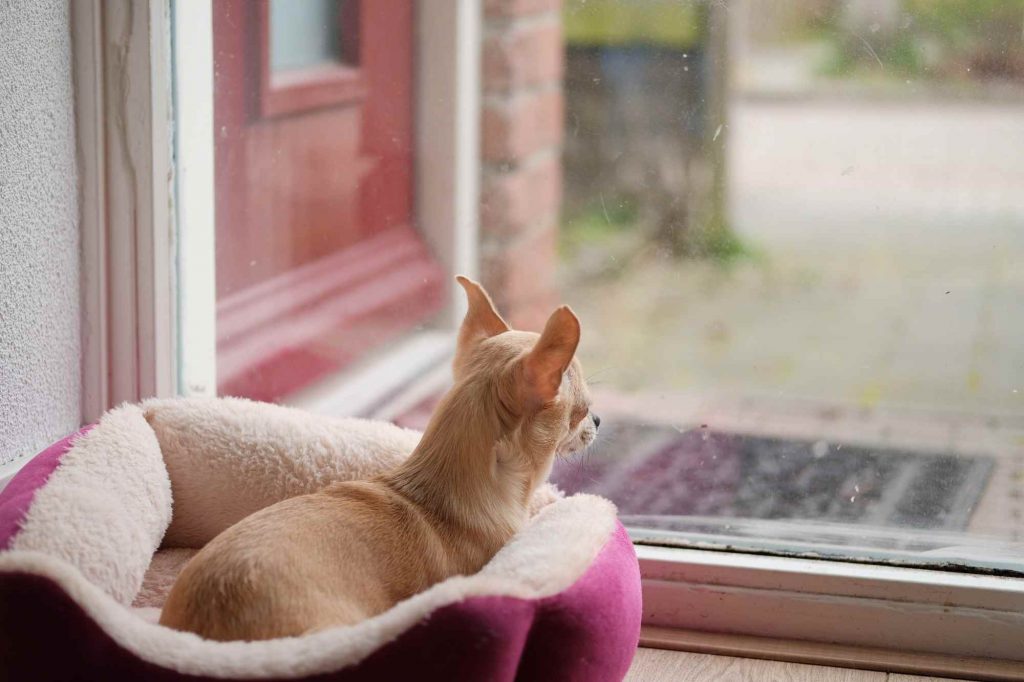
If the temperature indoors is comfortable for us, it should be just fine for our pets as well. But if you live in an older home that’s draughty and prone to growing chilly, or your pet usually sleeps on the kitchen or laundry floor, you may need to take a few steps to ensure your fur baby stays warm during winter.
Our pets will spend more time resting and sleeping this time of year, so make sure they have some warm bedding – a good quality bed or mattress and some cosy blankets will do nicely. Place their bedding in a draught-free position for winter nights, preferably away from doors or windows – glass is not a good insulator and will make your fur baby even colder during the night. During the day, however, a spot beside a sunny window or glass door is the perfect place for a nice warm nap!
Ensure that your pet’s bed or mattress is raised off the ground or is thick enough to prevent them from feeling the cold floor beneath it. For dogs, trampoline-type beds are a good option, although small dogs may prefer an igloo-style bed that they can burrow into. On really cold nights, most dogs will appreciate an extra blanket or two, or having a heated snuggle pad added to their beds.
Cats definitely prefer to sleep and rest elevated off the cold ground, so try to place their bedding on a raised, stable surface.
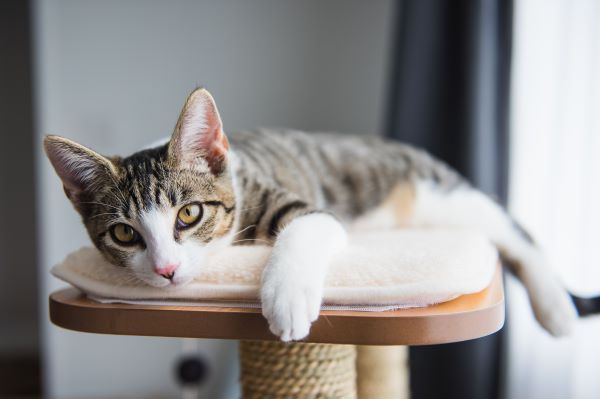
By day they will probably seek out sunny spots to lie in or small areas to curl up in for a bit of extra warmth. If you’re looking for some new bedding, consider purchasing a cat igloo or box which keeps in the warmth from their own body. You can also place a heated snuggle pad into their bedding before they go to bed.
Our article Top 10 Winter Products for Dogs and our Dog Beds product review will help you with some recommendations for your dog.
Our article Top winter warmers for cats has some great recommendations and further tips and advice for cat owners.
Keeping outdoor pets warm and dry
If your pet sleeps outdoors, you may think they are accustomed to the cold. However, no matter how thick their coats, they will still feel uncomfortable in a chilly, windy or damp environment.
Make sure their kennel is designed for outdoor living and is completely draught-free and waterproof. Outdoor kennels should be raised off the ground, even if just with bricks underneath. Check the kennel regularly for any sign of damp or leaks.
Place a raised sleeping platform or mattress in the kennel so they are not lying on the bare floor of the kennel. This is even more important as they get older, as arthritis can flare up from lying on a cold surface. Provide plenty of blankets and hang them out every few days to allow them to air. You can also give them a microwavable disk or snuggle pad for extra warmth and comfort. These are safe to use overnight in outdoors kennels and can last for up to 10 hours.
A dry kennel, or at least a cosy nook, is recommended for outdoor cats too, including any feral cats living in your neighbourhood.
Take a look at our Kennel Guide for recommendations.
Winter exercise – keeping your pet active in the cold and wet
Whether it’s a walk in the rain, a romp in the garden or some indoor fun and games, pets of all ages and sizes generally need some form of activity every day, winter included. A little more preparation may be required during the colder months – for both your pet and yourself – to make your pet a willing and cooperative participant.
Does your pet need a winter wardrobe?
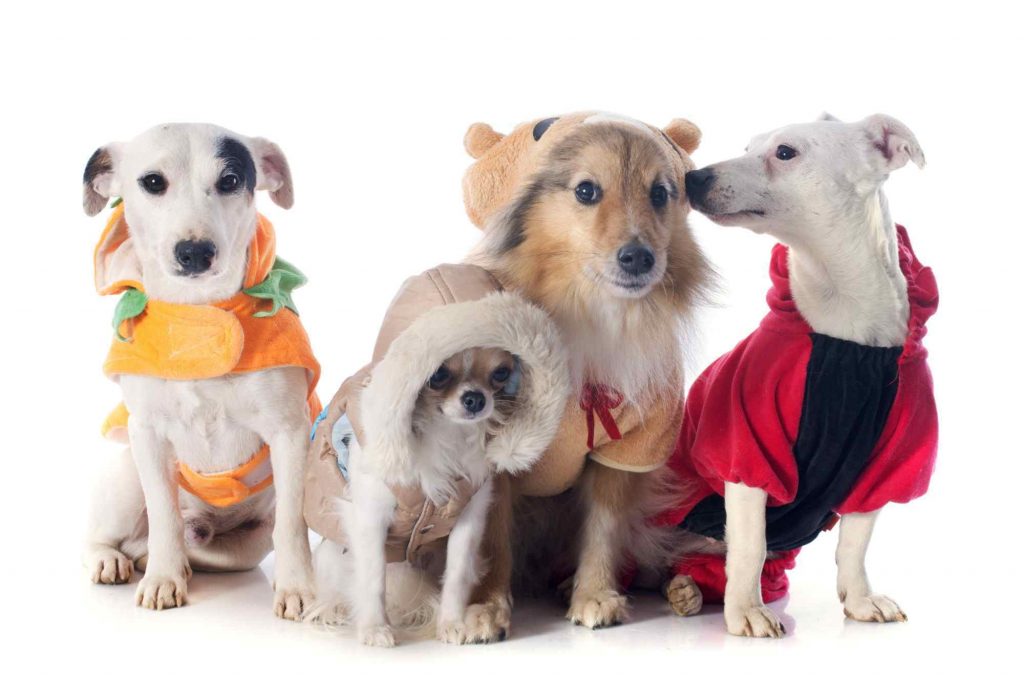
Determining whether your dog needs a winter jacket, jumper or raincoat for outdoor expeditions should be based on the conditions in your region as well as individual characteristics such as your dog’s breed, body type, coat length, age and health.
Small, delicate, and short-haired dogs, as well as medium and large lean breeds, may benefit from a sturdy winter coat and/or a fitted sweater even in more moderate winter climates. Jackets that cover the belly are best at keeping a dog warm as they trap the heat in from their own body. Also consider whether your dog’s paws are suffering from the cold – if so, there are booties and socks that can protect them and keep them warm.
When it comes to cats, most have plenty of fur to keep warm. The majority of cats have a thick undercoat, so they don’t generally require any clothing to venture outside (unless they are a Sphynx, in which case they may appreciate a fleece-lined jacket!).
Encouraging your dog outdoors in the cold or rain
While many dogs are happy to head out for their daily exercise come rain, hail or storm, there are those that will stubbornly refuse to step beyond the front door when it’s particularly cold or raining (or even just threatening to rain!), despite all your efforts and encouragement. For these weather-phobic dogs, your first goal is to get them to go outside with you, even if only to the front gate.
These tips might just help to coax them out the door:
- Dress them (and yourself) in warm and/or rainproof clothing while still indoors
- Put on their harness and/or lead while still indoors
- Exit the house as nonchalantly as possible, as if it’s just a normal day in normal weather
- Praise and/or reward them for going out the door with you
- Try for a short walk (just around the block or to the end of the street or even just around the garden or down the driveway!)
- Share your umbrella or other shelter with them if possible
- Don’t force them to go outside or punish them if they refuse
- Praise and/or reward them each time you get a little bit further from home
- Don’t give up if they refuse – try again the next day and the next – persistence usually pays off in the long run.
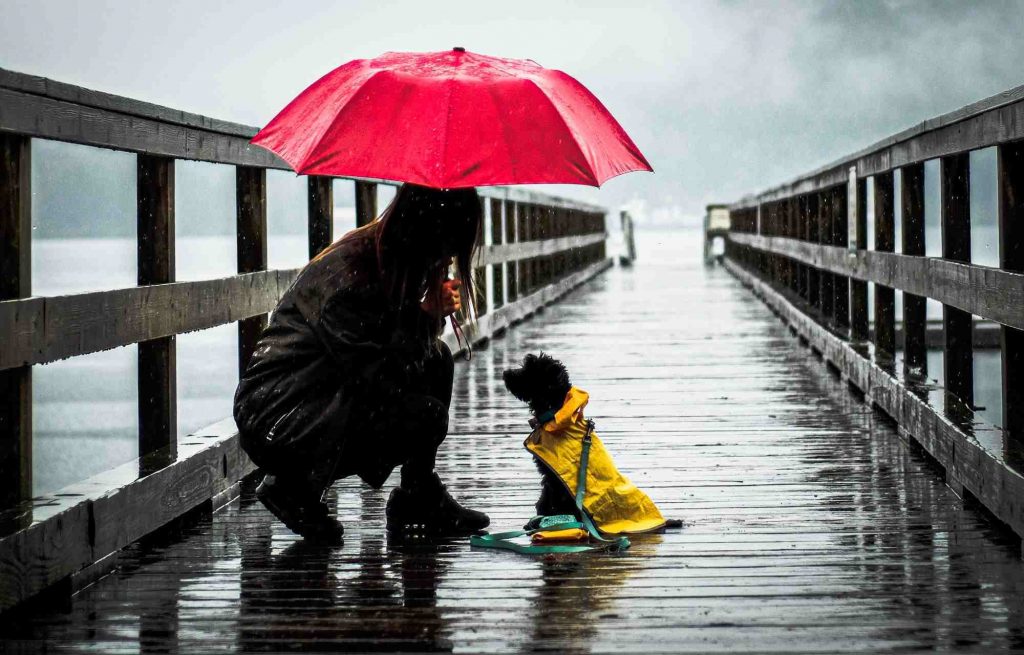
Indoor exercise for freezing or foul weather
There are always those winter days when it’s just too cold and miserable – for you, if not your dog – to venture outdoors. While short romps outside will help your dog’s body get used to the change in the weather, in extreme cold, it’s a good idea to keep dogs inside, with the exception of the heavy-coated northern breeds that thrive in low temperatures.
There are many indoor interactive dog games that can provide dogs with some fun and engaging opportunities to get the mental and physical exercise they need.
See our article Indoor workouts for dogs to learn some new ways to provide your dog with indoor exercise.
Exercising your cat during winter
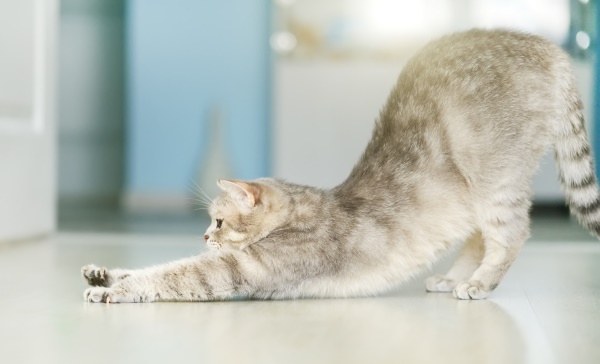
Generally, cats will move at their own pace and create their own exercise. However, indoor cats may need to be encouraged to exercise, especially when the weather turns cold. Help your cat stay active and healthy by engaging in extra playtime, for example rolling ping pong balls for them to chase and using other cat toys that encourage movement.
See our article Cat play and toys – it’s not just fun & games! to learn some new fun ways to provide your cat with exercise.
If your cat is used to spending time outdoors, they may become bored if they are now remaining exclusively indoors, so it’s even more important to spend some time each day engaging them in interactive play. Alternatively, provide them with opportunities for self-play, such as a cat tower to climb up or an outdoor cat run or enclosure to move about in.
See our article The best outdoor runs and enclosures for cats to learn how to provide your cat with safe and responsible exercise opportunities.
You could also try walking your cat on a lead if this is something you haven’t previously attempted. This requires some equipment, so make sure you are fully prepared and practice at home in the yard before hitting the streets.
See our article Walking with cats to learn how to provide your cat with safe and responsible exercise opportunities.
Maintaining your pet’s health through winter
Senior pets in particular are prone to conditions that may require extra attention during winter, such as arthritis or a weakened immune system. Heat regulation tends to decline with age, making even a thick-coated older pet uncomfortable in the cold. However, pets of all ages can benefit from some extra care to protect them from some common winter ailments and issues.
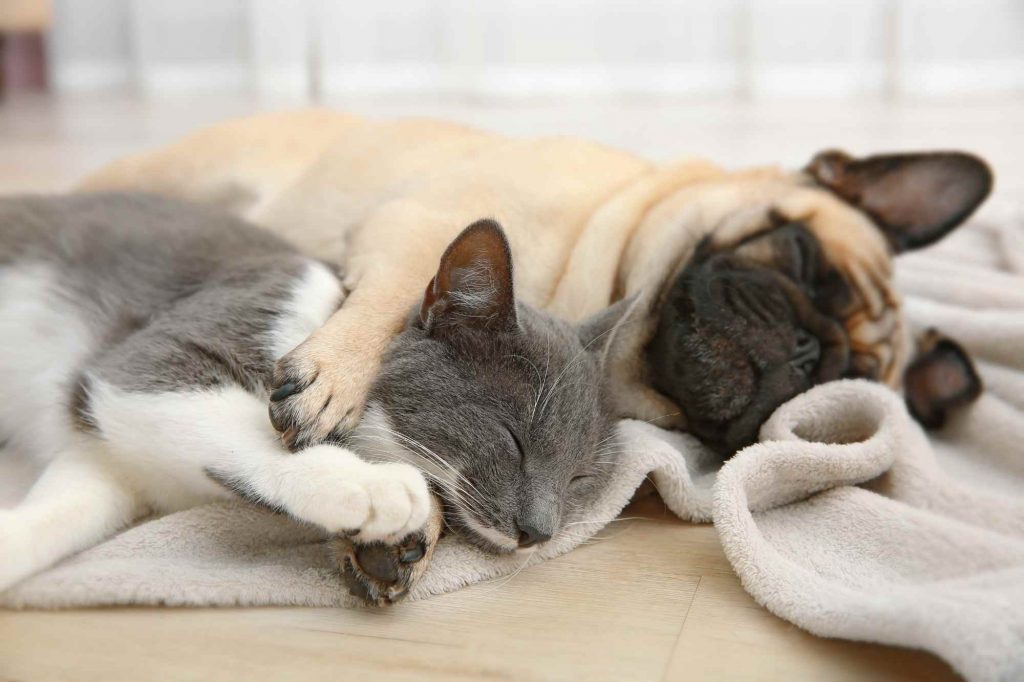
Arthritis
Arthritis, or joint inflammation, causes discomfort and pain and hampers movement, and even more so during winter when your pet is cold and less active.
Symptoms of arthritis in dogs include limping, difficulty in getting off a bed or up and down stairs, a reduced willingness to move and obvious pain after exercise. All of these are exacerbated when the animal has spent a long period of time lying in the same position on a cold floor, a hard surface or in a chilly kennel.
Arthritis in cats may be less evident, but you may notice some difficulty or hesitation when jumping onto the bed or couch, or increased matting of their coats as they find it painful to turn and groom themselves. Some cats may even become uncharacteristically aloof or aggressive, or they may show signs of pain when being patted or picked up.
If your pet’s arthritis isn’t already being managed by your vet, schedule a check up as soon as possible. The next most important things to do are to find ways to ease your pet’s pain and to make it feel more comfortable by providing a warm environment and bedding.
See our article Arthritis in dogs and cats to learn more about this condition.
Weight gain
Be careful not to overfeed your pet during winter, unless they live and/or sleep outside. Outdoor dogs and cats actually burn off more calories in winter than they do in summer in order to keep themselves warm, so they may require more food and/or different food during the winter months to maintain the same weight.
Indoor pets are a different story, as their bodies don’t need to work nearly as hard to keep warm. Additionally, if they are getting less exercise during winter, they are expending fewer calories and will therefore put on weight if they continue to eat the same amount. This means that the quantity of their food may need to be reduced during the winter months. Consult your vet if you are in any doubt.
See our article How to help your dog lose weight to learn more about this topic.
Skin and coat conditions
Cats and dogs can experience dry, red, itchy, scaly and flaky skin during winter, just like us. While it’s important to check your pet’s skin regularly for any issues all year round, it’s especially so in winter. If you notice any issues, including excessive licking and scratching, it’s always best to consult your vet. While they can cause your pet considerable pain and discomfort, most skin and coat conditions are treatable.
It’s important to maintain a good grooming regime through winter, especially in pets with long coats. While longer, thicker fur can help to insulate them from the cold, knots and matting can cause discomfort if you don’t help your pet to maintain their coat with regular grooming. Use a good quality brush to remove excess fur; furminators are particularly good in winter as they strip out the dead hair whilst still leaving it long for that extra warmth. Avoid shaving or cutting their hair if possible, because the longer fur keeps them warm during winter.
Dogs don’t need to be bathed as often as we might think during winter, but if they do need a wash, make sure the water is warm and dry them off completely so that they don’t get a chill. Regular brushing will also help alleviate dander between washes.
See our article Hair coat and skin conditions in dogs to learn more about this topic.
Parasite treatments
While parasites are more prevalent during the warmer seasons, they live in our environment all year round. It’s essential for your pet’s health that you continue to provide them with flea, tick and worm medication in the winter months. Pet parents commonly experience outbreaks of fleas in winter, especially in homes with carpeted floors, as the indoor heating creates an ideal opportunity for the residual flea eggs and larvae in the environment to hatch and thrive.
See our article Controlling and protecting against fleas to learn more about this topic.
A pet insurance policy with Bow Wow Meow will help ensure you can always afford to give your pet the best treatment through winter and year round.
- Find out more about our dog insurance options
- Find out more about our cat insurance options





